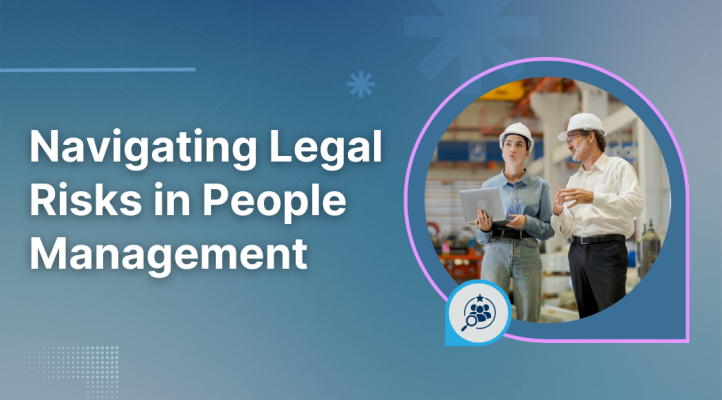Navigating Legal Risks in People Management

Navigating the complexities of workforce compliance is a top priority for businesses aiming to mitigate legal risks and maintain a strong reputation. Organizations must adhere to a vast array of regulations governing employment practices, from wage laws to workplace safety. Failure to comply can result in severe financial penalties, legal disputes, and reputational damage, making it essential for companies to proactively manage their compliance strategies.
Understanding Workforce Compliance
Workforce compliance involves adhering to local, state, and federal laws and regulations that govern employment practices. This encompasses areas such as wage laws, overtime regulations, workplace safety, data protection, and fair treatment of employees. Ensuring compliance not only mitigates legal risks but also fosters a positive work environment and enhances organizational reputation.

Common Compliance Challenges
- Wage and Hour Violations: Mismanagement of overtime and failure to comply with minimum wage laws can lead to significant legal repercussions. Employers must accurately track and compensate employees to avoid such violations.
- Fair Workweek Regulations: Laws requiring predictable scheduling and advance notice to employees are becoming more prevalent. Non-compliance can result in penalties and disrupt operations.
- Worker Classification: Misclassifying employees as independent contractors can lead to legal challenges and financial liabilities. It’s essential to correctly classify workers to comply with labor laws.
- Data Protection and Cybersecurity: With the rise of remote work and digital communication, safeguarding employee data has become paramount. Employers must implement robust cybersecurity measures to protect sensitive information.
Strategies for Effective Compliance Management
- Stay Informed: Regularly monitor employment law and regulation changes to ensure ongoing compliance. Engage with legal experts and industry associations to stay updated on best practices.
- Implement Robust Policies: Develop clear, comprehensive policies that address all aspects of employment law. Ensure these policies are communicated effectively to all employees and are consistently enforced.
- Leverage Technology: Utilize workforce management software to automate compliance processes, track employee hours accurately, and manage scheduling effectively. Automation reduces the risk of human error and enhances efficiency.
- Conduct Regular Audits: Periodically review compliance practices and records to identify and address potential issues proactively. Regular audits help maintain compliance and demonstrate a commitment to lawful practices.
- Provide Ongoing Training: Educate employees and management on compliance requirements and ethical standards. Continuous training fosters a culture of compliance and reduces the likelihood of violations.
The Role of Rhythm Innovations
At Rhythm Innovations, we offer an advanced, AI-driven platform designed to revolutionize compliance and risk management. Our solution provides:
- Automated Workflows: Reduce manual effort with customized workflows that enhance efficiency and accuracy.
- Advanced Reporting: Access real-time, centralized data with interactive dashboards for actionable insights.
- AI-Driven Insights: Predict risks and trends using intelligent algorithms for proactive decision-making.
- Streamlined Collaboration: Foster alignment across teams and partners for unified risk management.
By integrating our platform into your compliance strategy, you can navigate the complexities of legal risks in people management with confidence and precision.
Conclusion
Effectively managing legal risks in workforce compliance is essential for the longevity and success of any organization. By understanding common challenges, implementing strategic practices, and leveraging advanced solutions like those offered by Rhythm Innovations, businesses can ensure compliance, mitigate risks, and foster a positive, lawful workplace environment.


